
Are you thinking of redecorating your home? Now’s the time to add a modern green and gray living room to your mood board. Its the perfect pairing that lets you add color into your space without losing the elegance of a neutral scheme.
“This combination can be warm, punchy, and rich all at once,” explains designer Chelsea Hing. “It makes living spaces feel naturally comfortable.” Whether you go for a bold emerald green, soft sage, or prefer more of a moodier mid-point (like a dark olive or a smokey khaki), layering green and and gray is a living room color idea that taps straight into biophilic design principles.
So, whether you're looking for a calming palette, or want a darker scheme using dramatic shades of green and gray, below, we've shared a few of our favorite ideas straight from designer's playbooks.
1. Create a Contrast With Green and Gray
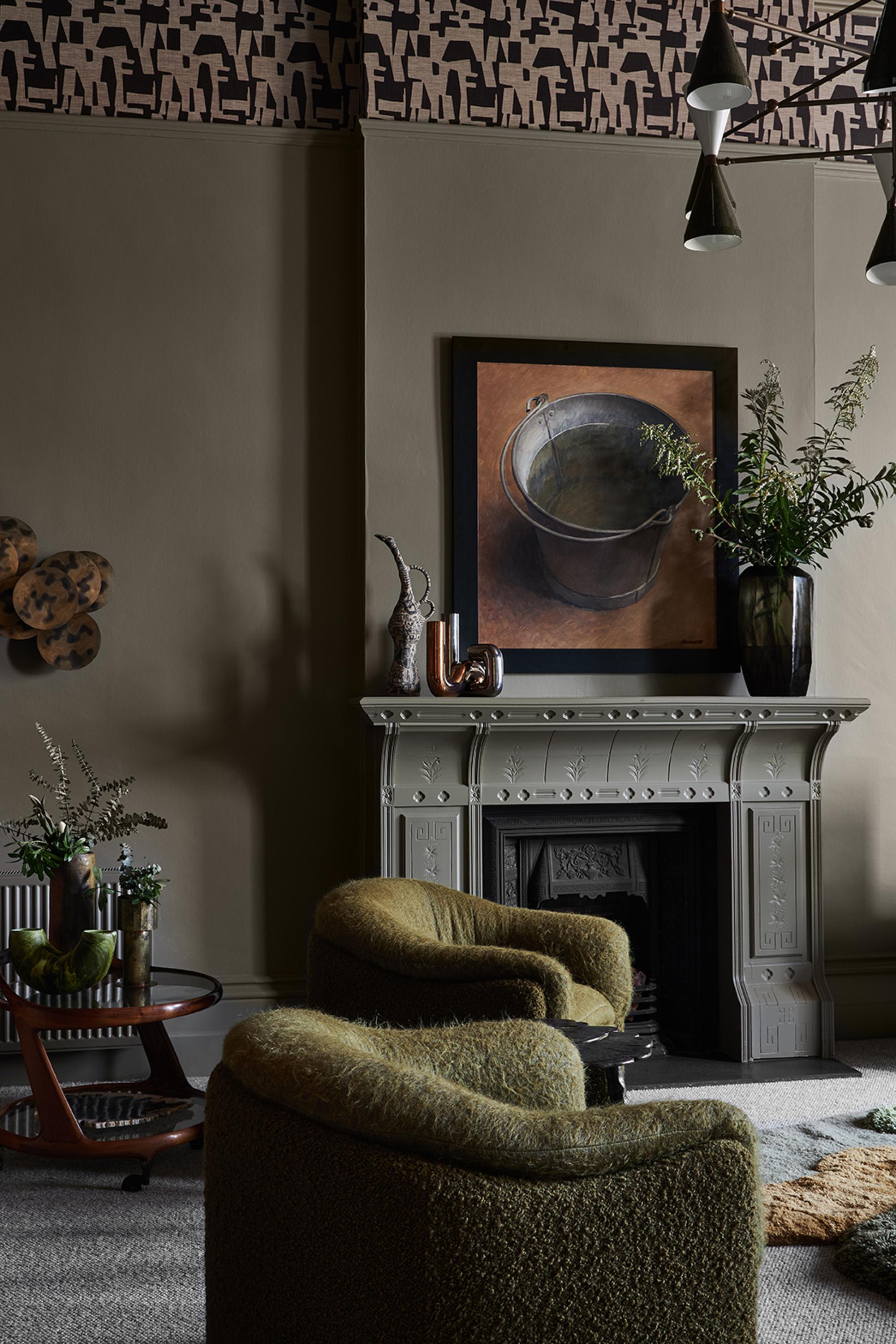
“Aim for tonal restraint with this color combination,” suggests interior designer Simone Haag. “Gray can often be architectural, so use green in a way that wraps you in and makes rooms more comfortable.”
The gray in this modern living room — created by Simone for clients who wanted to use it as a place to enjoy music, whiskey and entertaining — carries from the walls onto details like the trims and wow-factor fireplace, but it’s the adjacent mossy green bouclé chairs that help to soften the effect, making the space feel inviting.
“This tension creates a dialogue that feels grounded yet elevated," explains Simone. "Green is an organic hue that works well within a cooler, moodier palette, but it’s about balancing palette, textures and form, too."
2. Let One Color Lead
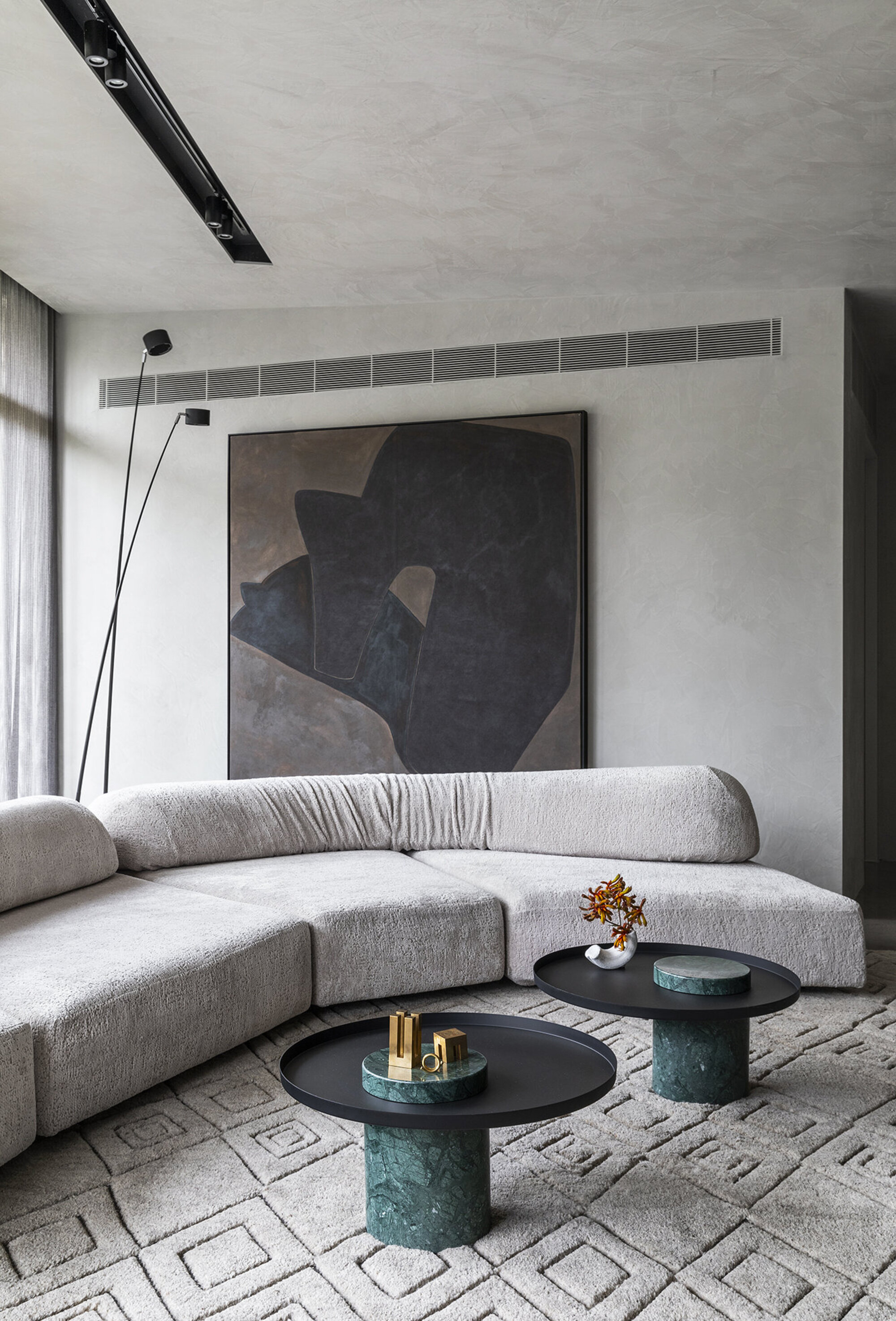
If you love gray, you can still make the go-to neutral the foundation color of your living space. Introduce green to your living room through statement pieces of furniture, as in this project in Melbourne adeptly demonstrates.
“The green here is a small but powerful punctuation that breathes balance into this space,” explains the home’s designer, Chelsea Hing. “It's about using different textures and colors in a way that anchors the room."
To make any ‘pops’ of green or gray work particularly effectively, consider placing them in the center of your room rather than in the corners of it.
There are so many marble varieties that naturally mix shades of green and gray, like this stunning side table.
3. Drench the Space
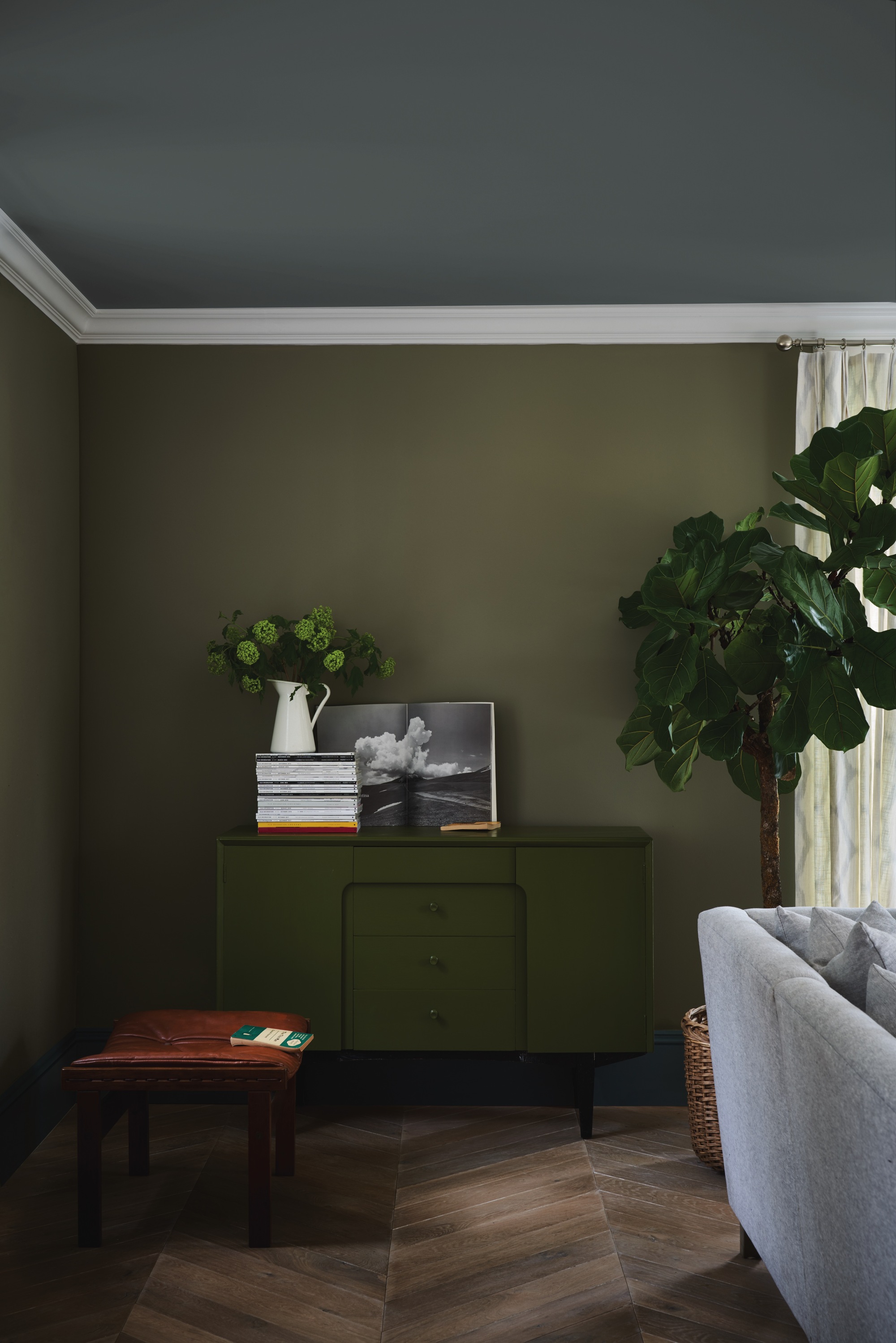
Paint is, of course, one of the most effective ways to bring color into a living space, but make it just the starting point of your green and gray living room, rather than the only way you use the colors in the room.
“Envelop a room in the two colors,” says Eloise Pfeiffer from Pfeiffer Design. “Here, the muted olive walls wrap the space in a cocoon-like calm, while the soft, stormy gray ceiling adds depth and intimacy.”
“To enhance this immersive effect, color-block with the shades in a way that feels deliberate and seamless," she adds. "The cabinetry almost disappears into the wall, for example, while the gray sofa pulls the color from the ceiling and back into the center of the room.”
4. Go Subtle and Use Texture Instead
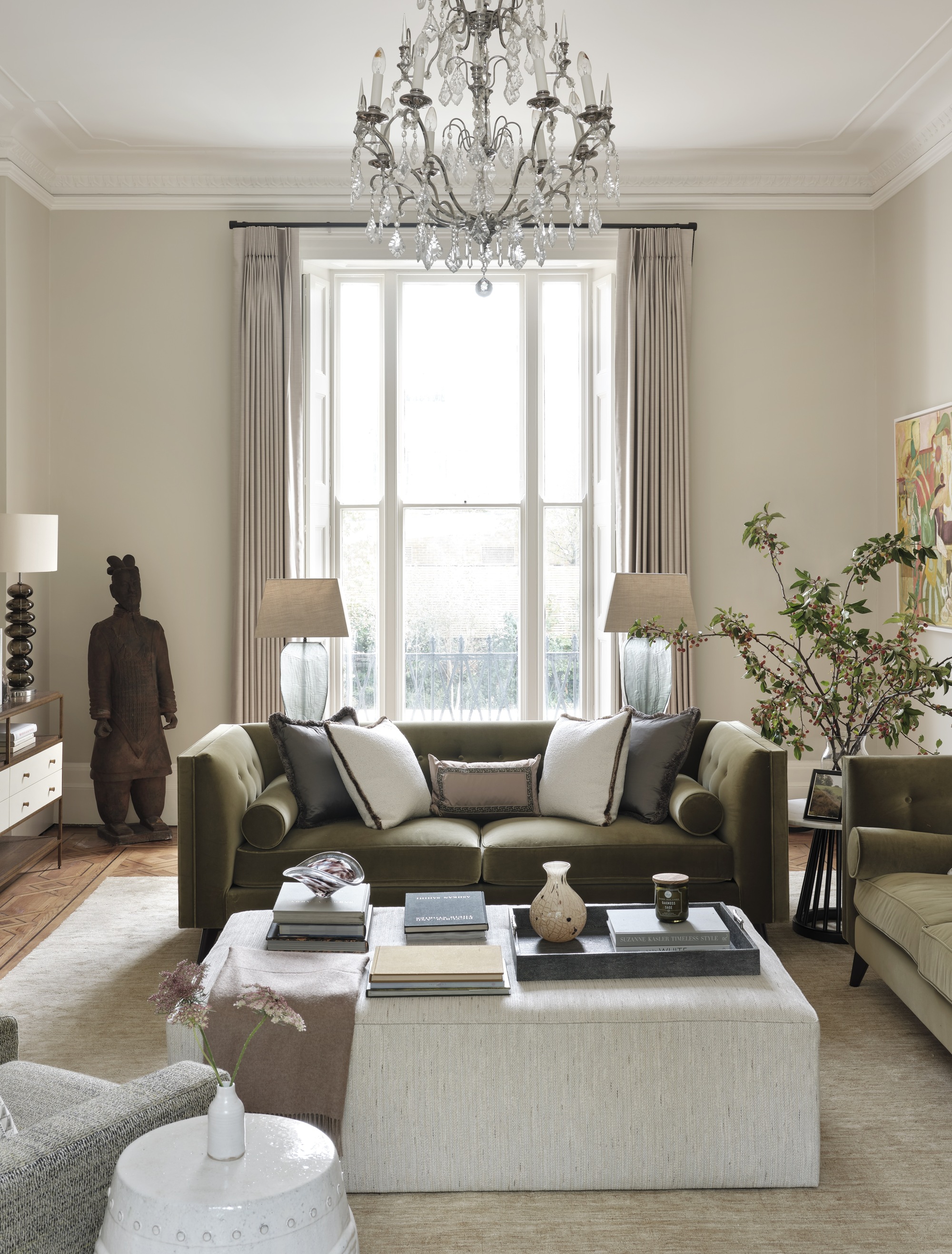
“Neutrals don’t have to be bland,” says interior designer Rebecca Hughes. “There is a quiet simplicity to combining pale gray and green that works wonderfully in light-filled spaces."
Texture is, as ever, key, especially when decorating in such a pared-back palette. Natural linens, plush velvets, and brushed metals work alongside complementary wood, glass, and stone elements to enliven this project’s restrained palette.
“To create a space that feels rich and inviting, without relying on overly bold color, you have to engage the senses, so use these tactile elements to create contrast,” says Rebecca.
5. Make Your Walls a Canvas
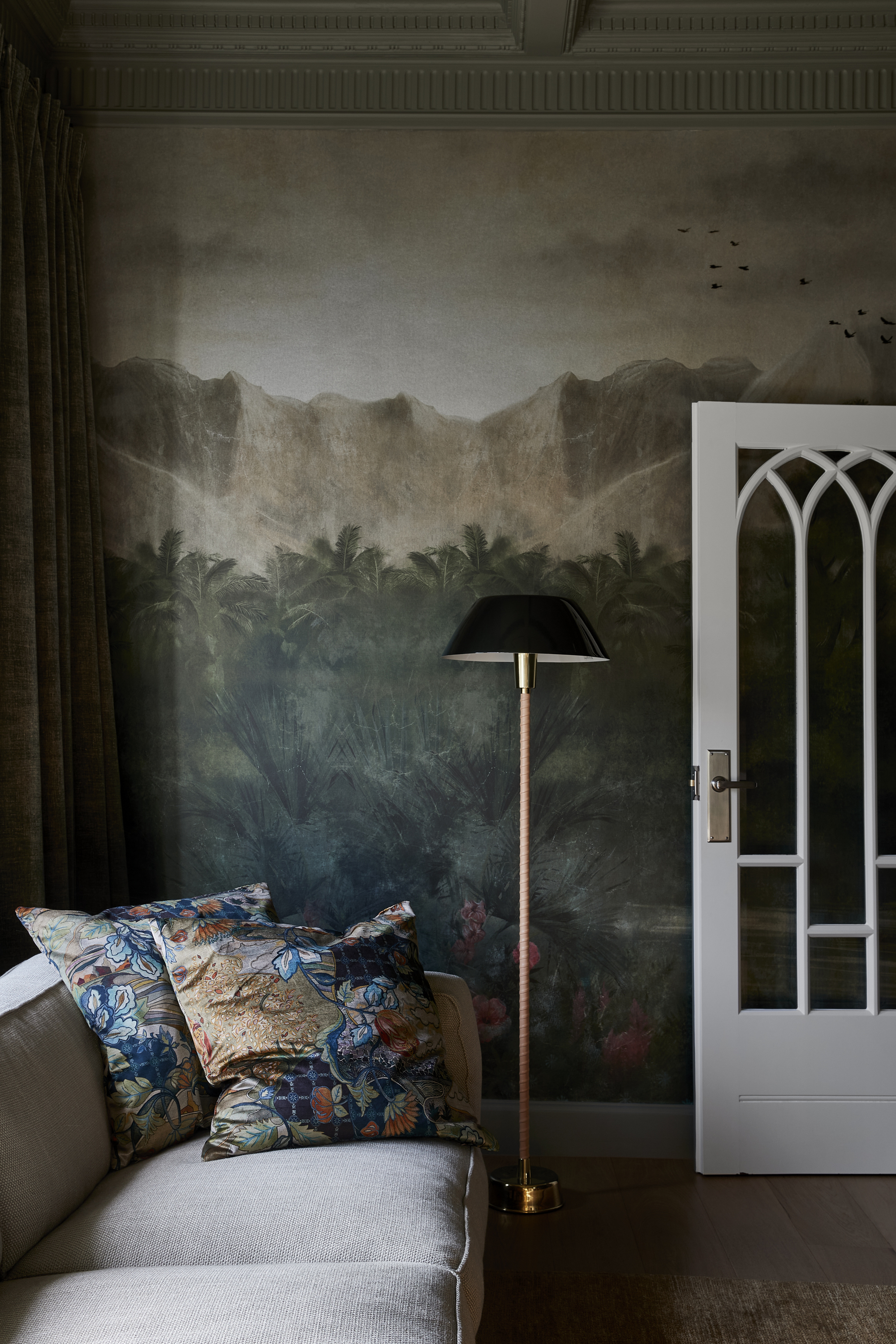
Living room wallpaper ideas can transform walls into ‘wow’ features in a space, but a palette of gray and green also allows you to dial back the impact and instead use them to create a sense of serenity.
“Pictorial and quiet designs help to keep a space feeling grounded and calm without being minimal,” explains interior designer Paul Hecker, Director at Hecker Guthrie. “This wallpaper holds the room, giving depth rather than seeming busy. It’s immersive, the space feels like walking into a painting rather than being bombarded by visual noise.”
Reflecting on the colors he chose for this project, Paul explains that green makes a natural pairing to the soft grays. “We always love using green because it straddles this beautiful line between being a color and feeling like a neutral.”
A wall mural is an instant way to introduce the colors into a green and gray living room scheme, and this design taps straight into the biophilia trend, too.
6. Add Color with Stone
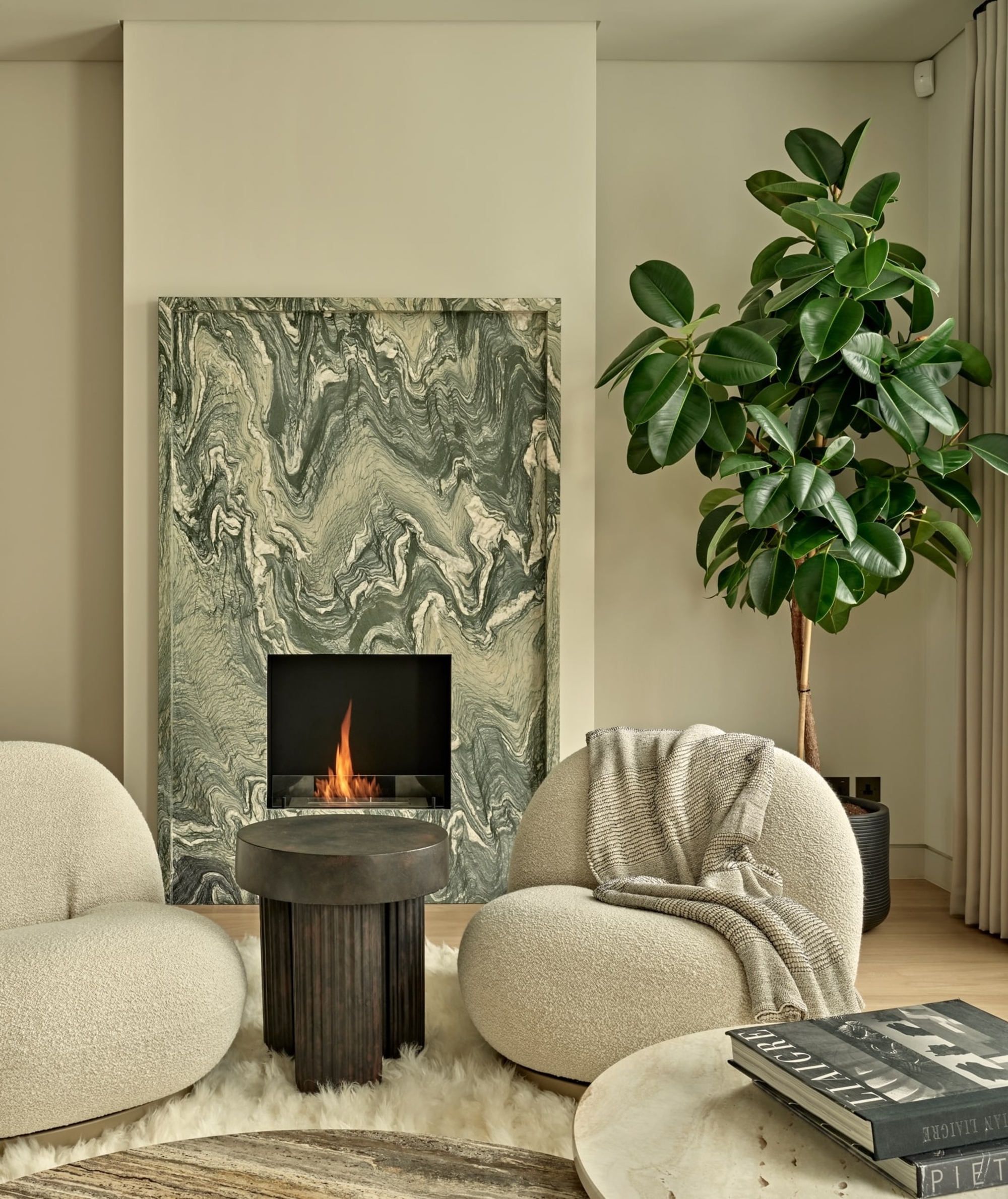
Marble is a prized natural material that is a favorite among interior designers who love to make it a focal point in bathrooms and kitchens — but it’s increasingly being spotted in living rooms, too. So why not layer different varieties of the stone to create a green and gray living room?
“The green marble fireplace becomes an energizing but grounding focal point in this space, especially in contrast to the gray marble coffee tables,” explains designer Brian Woulfe, founder and director of Designed By Woulfe. “The swirling veining throughout brings a sense of movement that we’ve echoed in the sculptural silhouettes.”
“Letting the expressive beauty and harmonious colors of marble become a quietly luxurious feature rather than something overly statement making," adds Brian. "Subtlety allows these stones to speak rather than shout.”
7. Create Coziness With Green and Gray
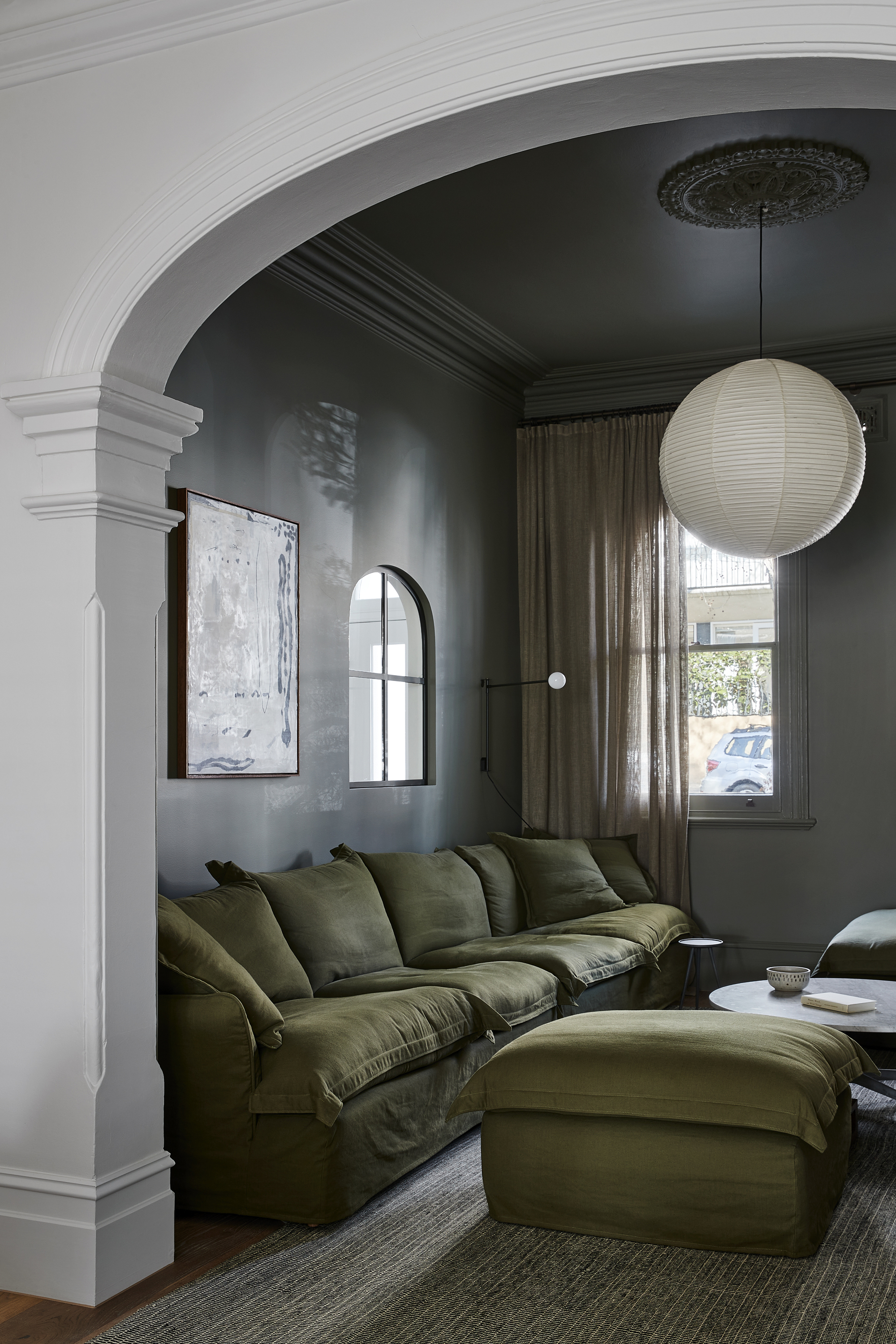
When the colors are used in their darkest iterations, green and gray living rooms can become a rich, inviting environments that boldly encourage lounging and restfulness, especially in a corners or nooks of a brighter space.
“This space was conceived as somewhere to retreat to, rather than a room for the everyday,” explains Paul Hecker of this nook, another project designed by his Melbourne-based studio Hecker Guthrie.
“The colors, while perhaps not instinctive, were chosen to create intimacy and warmth, making the space feel inviting even if slightly unexpected,” he adds. “It’s not about logic or harmony, necessarily, more about the emotion and atmosphere the colors can create.”
Using green and gray in darker shades helps to create a sense of coziness. Add in some soft textures, like this cushion cover, and you've got yourself a nook.
8. Bring the Outside In

To create a living room that feels truly connected to its surroundings, let nature be the starting point of your palette.
“Living spaces throughout this home were carefully positioned to forge better connections with the landscape and to transform the home into a serene retreat,” explains designer Miriam Fanning, principal of Mim Design.
The biophilic living room of the aptly named ‘Verdant Residence’ features subtle, but no less impactful, shades of green and gray in a way that echoes the vista from its windows, with the natural light gently diffused by linen sheers.
“We took inspiration from the oak-lined street to subtly bring the outside in,” says Miriam.
9. Use the Colors to Zone the Space
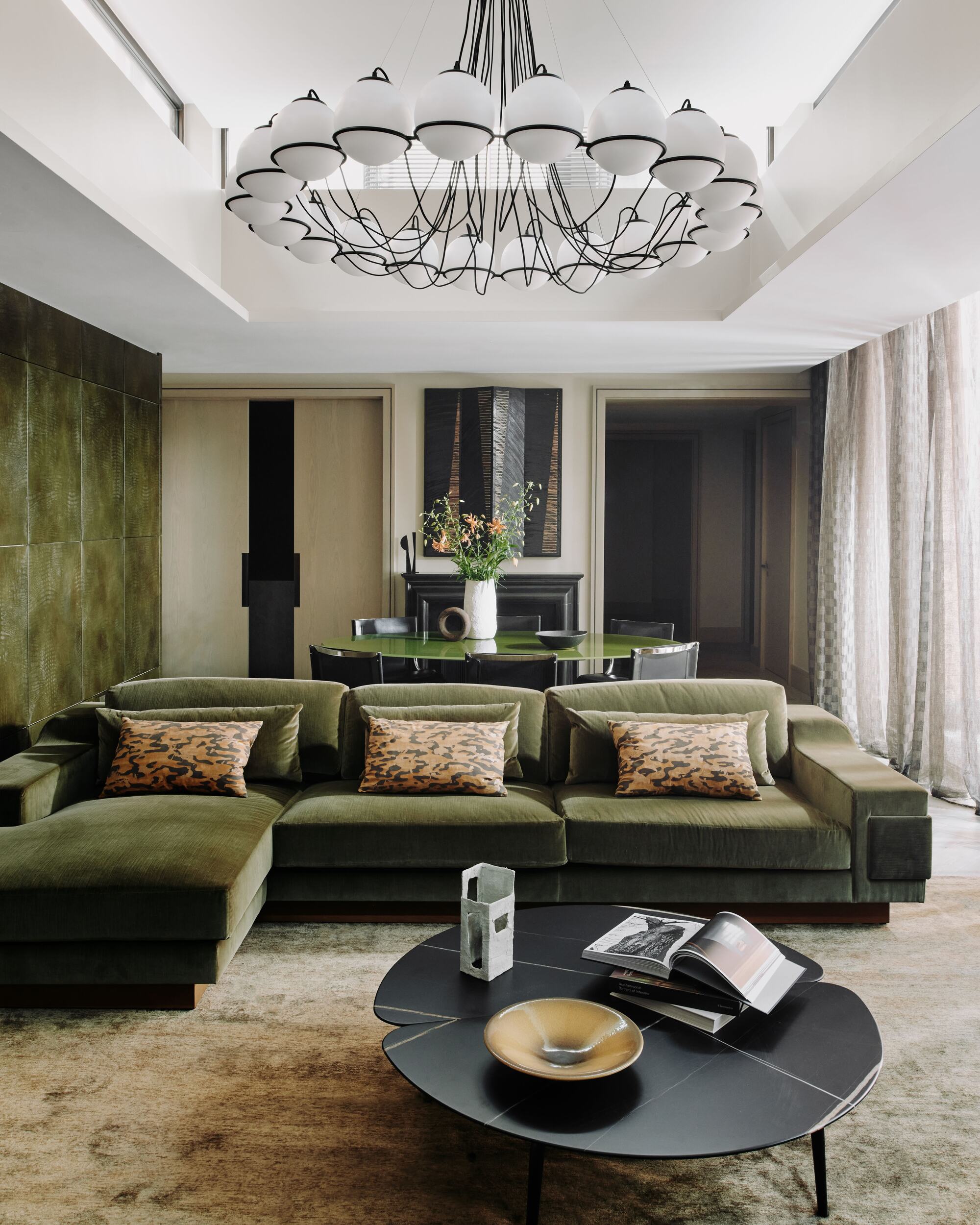
“Green is absolutely the anchor in this space,” explains designer Jessica Schuster. “We’ve used it intentionally on the focal points like the velvet sectional and dining table, as well as the textured wall panels, to draw the eye and establish a rhythm.”
The green sits beside neutrals like taupe and beige in this living room, but it is the gray elements in the space — from the matte ceramics to checkered sheers — that tie everything together.
“The surrounding palette allows the green to truly breathe, with the slate accents creating a balance that plays between earthiness and refinement,” says Jessica.
FAQs
Which Shades of Gray Go Best With Dark Green?
Light Grays (such as Abalone by Benjamin Moore) can appear to fade into the background. The benefit? They keep the focus on the green, meaning there’s less of a contrast. This can be an effective choice when balanced with other, darker grays, so don’t be afraid to layer lighter tones in.
Dark Grays (like Little Greene's Vulcan) will echo the depth of darker green shades to create a dramatic, moody vibe. Use them to create a sophisticated feel in living rooms dedicated to hosting as well as relaxing.
Cool Grays (a la Winter Orchard by Benjamin Moore) will give deep greens a pleasing contrast that works particularly well in contemporary spaces. A living room needs warmth, though, so mix in natural woods and stones to provide a mid-point.
Warm Grays (including Farrow & Ball’s Dove Tale) can be anything but ‘griege’. Use them to soften the bolder qualities of dark green, giving the color a sense of coziness and warmth against cooler biophilic shades.
The most gorgeous green and gray living room ideas go on to create inviting spaces that look colorful and feel layered without seeming visually ‘cluttered’.
However you choose to do it, just makes sure you avoid these green decorating mistakes at all costs.







